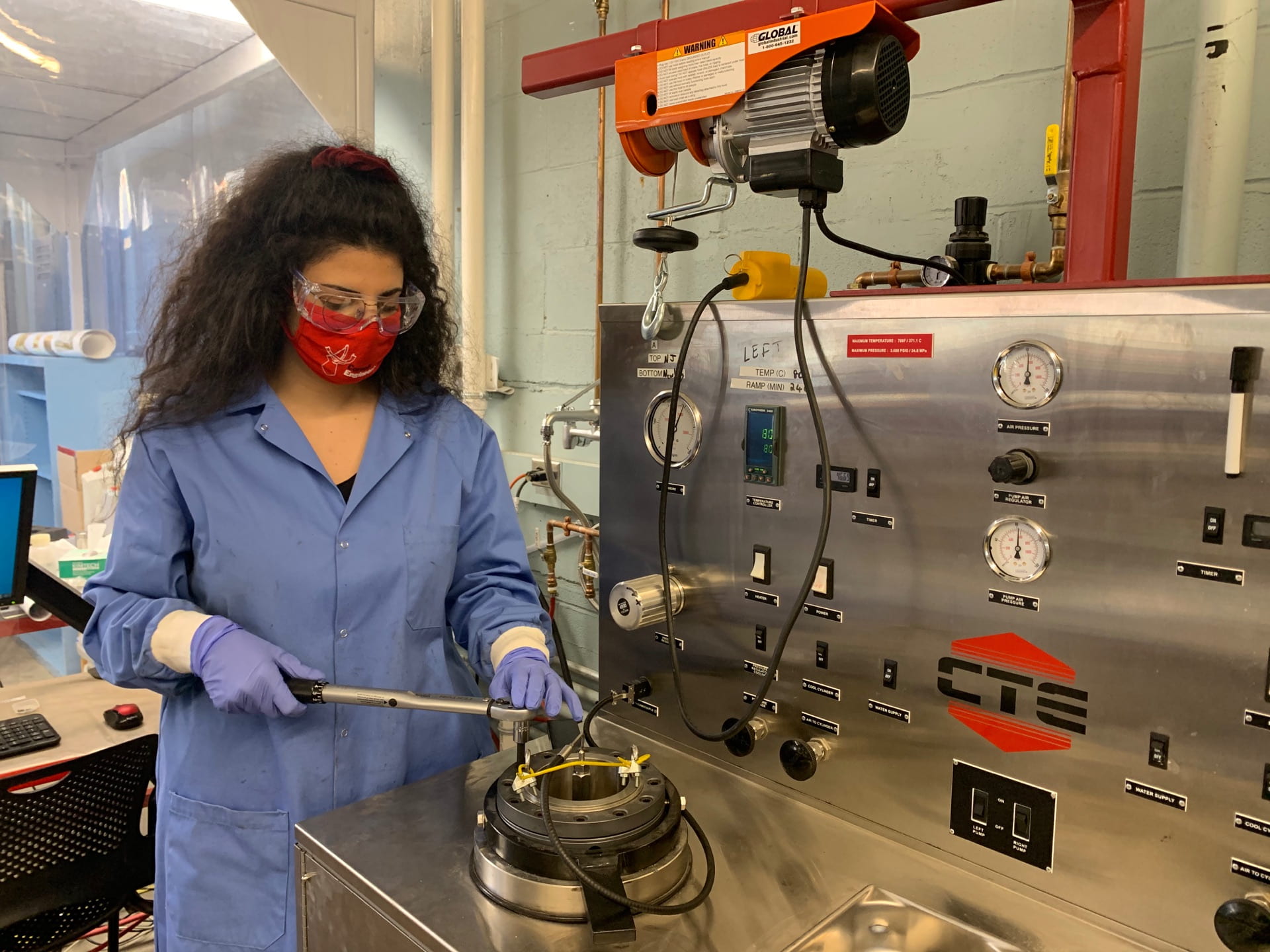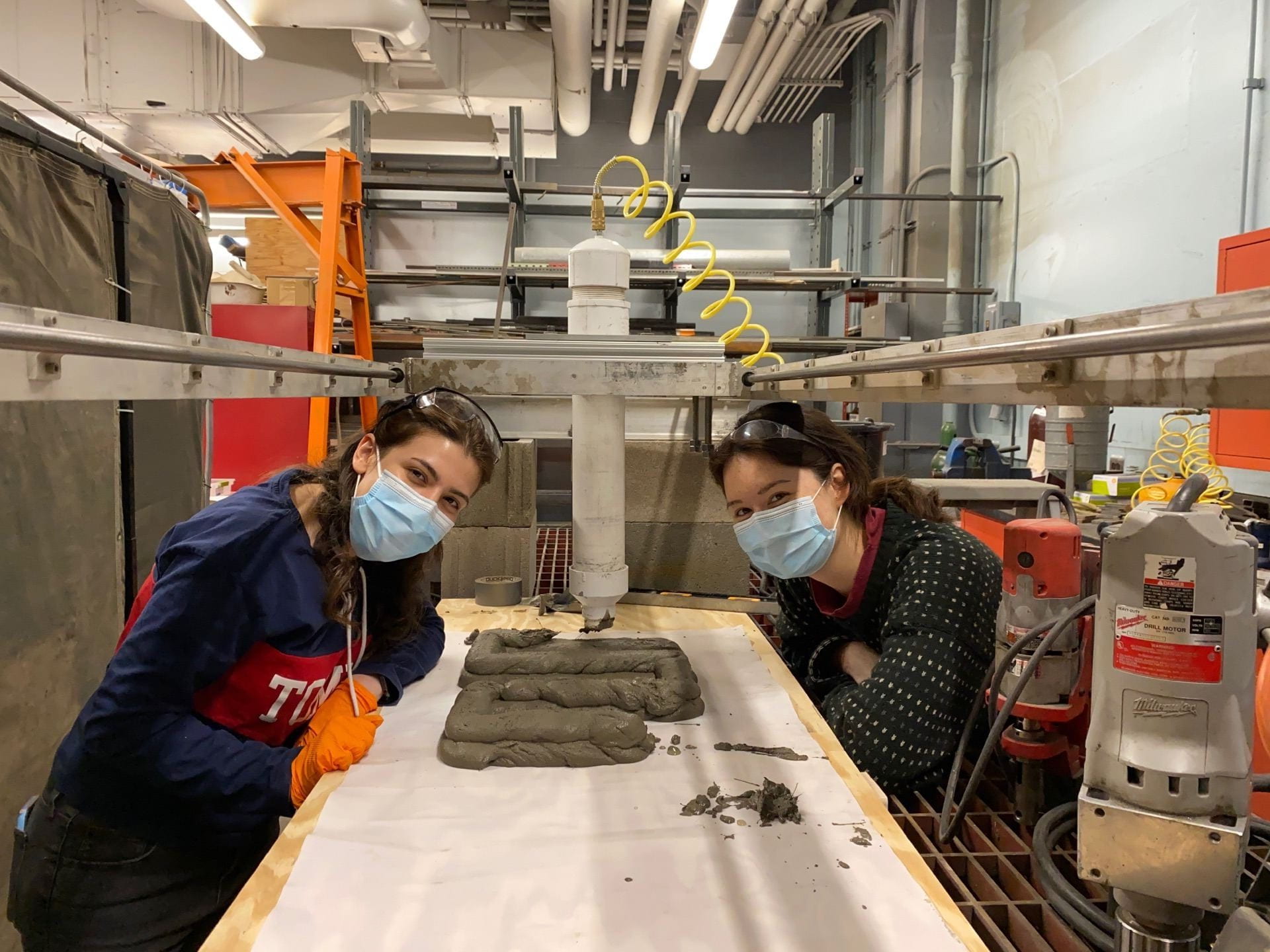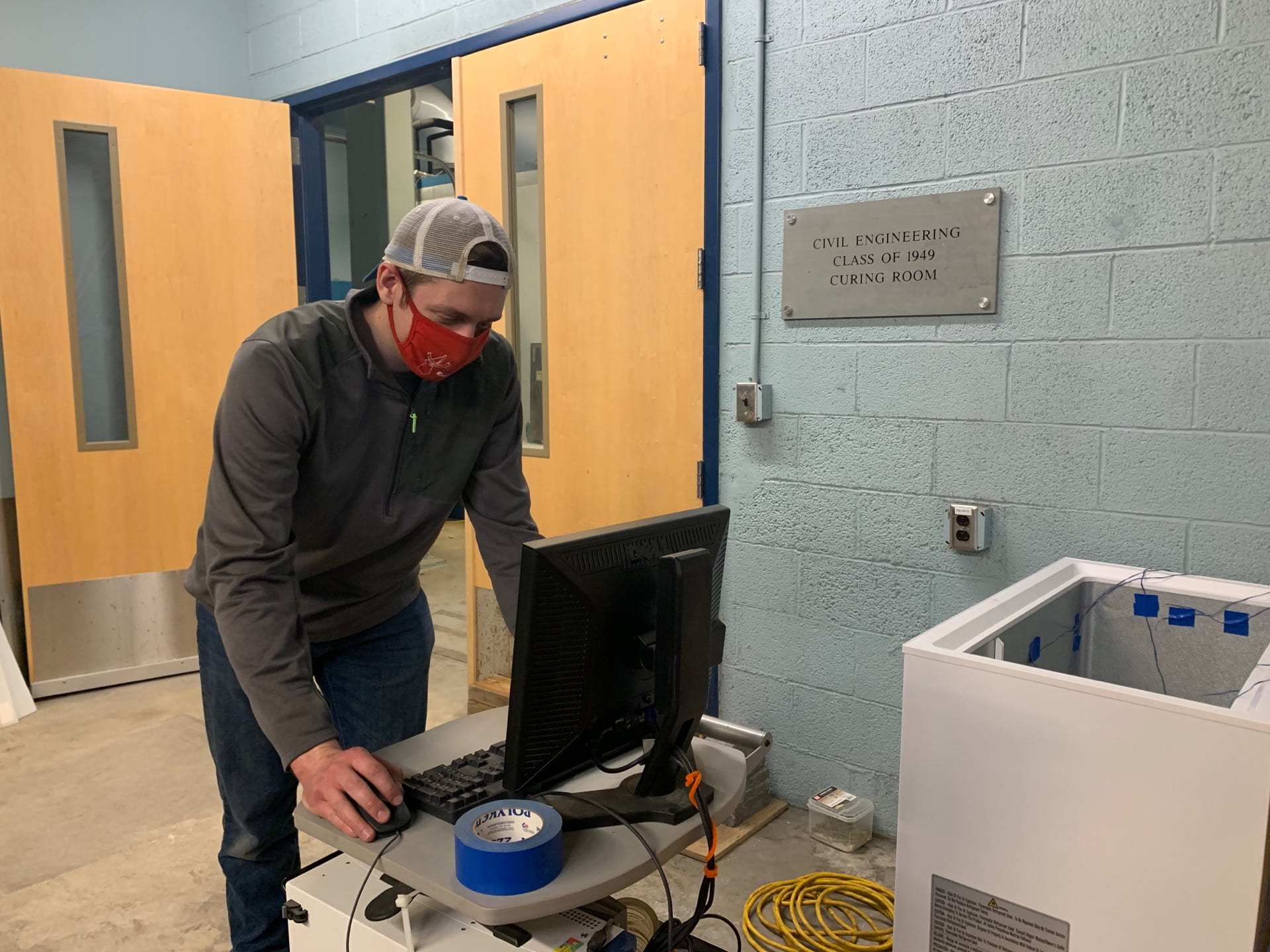Automated Construction Using Concrete
Currently, cement paste (containing cement, water and chemical additives) or mortar (cement paste with sand) or “concrete” (mortar with very small rocks) is pumped through a nozzle and is deposited layer by layer. To ensure pumpability, current mixes contain a larger proportion of cement paste in comparison to traditional mixes. This not only increases the cost of the mix and worsens the environmental footprint of the material but it also leads to excessive shrinkage cracking and layer debonding. Furthermore, the green strength of concrete, i.e., the strength of concrete prior to the “liquid-to-solid” transition has a significant impact on the printable height. Reinforcing concrete 3D prints within each layer is difficult, which is why current building practice relies on 3D printing sacrificial 3D printed “concrete formwork” for conventional reinforced concrete to be manually embedded in the structure. By itself, most current 3D printed concrete is not a structurally sound assembly and requires traditional building methods to make it structurally feasible for construction. This constitutes a significant disadvantage. We are developing novel techniques and materials in order to address significant challenges currently facing automated construction using concrete.
This work is being done in collaboration with Prof. Sasa Zivkovic, Assistant Professor, Dept. of Architecture (https://www.rcl-aap.com)
Cement-based Magnetorheological Fluids
Cement-based magnetorheological fluids are novel materials that provide ‘flow-on-demand’ and ‘set-on-demand’ properties which are beneficial for a wide range of applications. Based on the principles of magneto-rheology, when an external magnetic field is applied to a fluid carrying magnetic particles (also known as a magneto-rheological fluid), the fluids behavior can be altered in real-time. In the presence of the magnetic field, the rheological properties of such a modified slurry change instantaneously to cause a stiffening behavior characterized by yield point values that are increased by several orders of magnitude. By varying the intensity and the direction of the magnetic field as well as the dosage of magnetic particles, the flow properties of the slurry can be altered and the flow can be beneficially directed as desired.
Improving Zonal Isolation of Oil and Gas Wells
The main goal of a cementing job is to provide a complete and durable zonal isolation from when the cement slurry is placed, up until the well is abandoned. Zonal isolation is extremely important in the oil and gas industry since it prevents fluids (such as water or gas) in one zone from mixing with oil in another zone. The ability of the cement sheath to provide zonal isolation depends on the cement/casing interface, the bulk cement and the cement/formation interface. The bulk cement layer could be affected, for example, if there is gas or liquid migration into the cemented annuli during placing or if there are regions without any cement slurry. Failure of a cementing job could lead to oil spills (e.g., BP oil spill, 2010) that result in both immediate and long-term environmental damage and destruction of ecosystems. Furthermore, oil spills not only affect human health due to indirect and direct inhalation and ingestion of contaminated products, but they also cause substantial monetary burdens to society. Having better control over displacement of cement slurry during cementing could help avoid zonal isolation problems that arise from poor cementing.
Furthermore, it is estimated that there are about 10 million wells in the world that are currently producing oil and gases. Once they reach the end of their lifetime, the wells need to be abandoned permanently. It is essential to explore alternate materials that can be used to successfully plug the well.
Probing Material Behavior at the Micron Scale Using High Energy X-rays
Far-field high-energy diffraction microscopy (ff-HEDM) measurements are techniques developed for the study of metallic alloys at synchrotron X-ray sources and can be used to quantify the crystal orientation and elastic strain (connected to stress) of individual crystalline grains with sizes on the order of microns. Such mechanical response data can be used to study the variation of stresses across each of the crystalline phases in concrete that is subjected to various loading conditions. These measurements can provide a new way to optimize the crystalline composition of Portland cement or other supplementary cementitious materials to beneficially enhance the mechanical response of concrete. Furthermore, ff-HEDM can also be used to accurately measure the stresses in a steel fiber and to improve the accuracy of existing computational models on fracture mechanics of fiber-reinforced concrete.
To learn more about the Cornell High Energy Synchrotron Source please visit: https://www.chess.cornell.edu
Also, check out this video https://video.wcny.org/video/chess-x-rays-future-vesbsd/
Sustainable / Alternate Cementitious Materials
Today’s concrete is not only composed of portland cement, water, sand and rocks but is a complex mixture containing a wide range of supplementary materials and chemical additives to achieve targeted properties. In spite of all the advances and scientific breakthroughs, our infrastructure is still crumbling, not only due to extreme events such as hurricanes and earthquakes, but due to freeze/thaw cycles and exposure to aggressive chemicals such as chlorides/sulfates. Now is the time to think outside the box and to develop novel sustainable materials, testing methods and technology transfer tools in order to build long lasting structures just like the Romans did.



